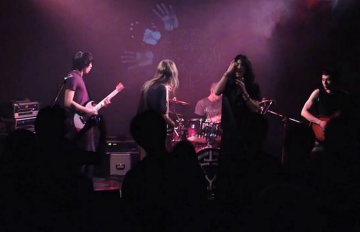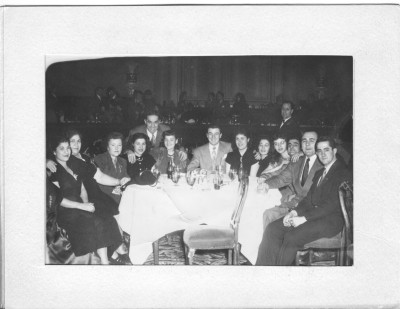Turn down the music. I’m trying to hear.
Friday, April 29, 2016
One day, when you stand in line to get into a local music club, you might also then stand in line to get your – ear plugs! At some music clubs on the West Coast, that happens. As a matter of fact, the issue of hearing loss became so much of a concern in cool and hip San Francisco, back in 2002, that the city actually passed an ordinance called the “Earplug Ordinance for San Francisco” – and it required “any place of entertainment and after hours premises with a dance floor and a capacity of 500 persons” had to do “provide or sell, at a reasonable cost, earplugs, to patrons.” Unlike other trends that start on the West Coast, this one doesn’t seem to have caught traction on the East Coast. Perhaps it should have.
The danger of amplified rock, Hip Hop or heavy metal causing permanent hearing damage at clubs or in music venues is very real. It’s also a danger to listen through headphones at high volumes. In general, danger exists when periods of listening are between 3.75 minutes and 30 minutes of exposure/day, and sounds are louder than 85 decibels. That’s when permanent hearing loss can take place. (Usually, sounds of less than 75 decibels, even after long exposure are unlikely to cause hearing loss). The louder the sound are over 85 decibels, the shorter the amount of time it takes Noise-Induced Hearing Loss, or NIHL to happen, according to the National Institute on Deafness & Other Communication Disorders (NIDCD).
GET THE LATEST BREAKING NEWS HERE -- SIGN UP FOR GOLOCAL FREE DAILY EBLAST
We don’t “heal” our hearing.
The mechanics of noise-induced hearing loss is that exposure to ‘too loud’ sounds that lasts a long time, damages the sensitive inner ear structure, sensory cells commonly called hair cells. These are the cells that convert sound energy into electrical signals that travel to the brain. This type of hearing loss is cumulative, invisible, and – permanent. So, for all the lifelong music lovers out there, if you’ve been blasting music into your ears since you were young, you might not even notice the damage that’s probably already happened. And it doesn’t heal; but there are solutions such as hearing aids, to help you hear better after this damage has been done.
Rock vs. Classical vs. Church Choir?
While we all have different styles of music we like, hearing loss treats sound as sound, and the difference between loud rock music, and a rousing classical concert, is no different when it comes to hearing loss. Violins can produce peak volume at 103 decibels – noisier than many power tools – and a piccolo can be just as loud as a drum. According to the Journal of Singing (2015), “The instrumentalists who had the highest incidence of hearing loss were percussionists (100%), brass (28%), wind (20%), and string (7.3%) players. Instrumentalists who had been playing for more than 20 years had a 42% incidence of hearing loss in contrast to a 0% incidence in musicians who had performing for less than 10 years.”
Occupational hazards.
Protecting the hearing of instrumentalists or those around the loudest instruments have involved the use of Plexiglas barriers, or even seats that are rotated or elevated within orchestras. Many musicians wear earplugs that are specially designed for people who play music. Musicians’ earplugs let a person hear all of the music, but at a lower sound level. Knowing that sound travels in a straight line, so the sound is louder when someone stands directly in front of or behind a speaker, professional musicians know to stand to the side of a speaker, or to angle the speakers away from them. Musicians also take breaks between sets of music or while practicing to give their ears a rest.
There have been more studies examining hearing loss in instrumentalists than in singers, and some 50% of all instrumentalists were found to have hearing loss of some kind. Research into the hearing loss of vocalists was less definitive, and the issue of how singing might lead to increased endolymph pressure, and thus an increased hearing loss especially in the low-frequency region. Whether singing raises cerebrospinal fluid pressure is an area that is attracting new research.
In-Ear Monitors (IEMs)
The In-Ear Monitors you see singers and musicians wearing during performances are often custom fitted for an individual's ears to provide comfort and a high level of noise reduction from ambient surroundings. They also provide musicians with needed information related to the sound engineer who will be tuning the monitors. They can do that while having excellent sound quality and being protected from harmful, loud sounds. Some singers use IEMs all the time, though they are a fairly recent tool. Look close and you’ll see rhinestone encrusted ones and color matched IEMs to a singer’s outfit.
For those who make their career by singing, protecting hearing is especially important. Singers should avoid listening to loud music through headphones, or exposing themselves to loud sounds such as power tools, motorcycles, etc. It’s essential for a singer who wants to have a full career, to protect hearing as well as one’s voice.
A Noisy Planet
On the young age spectrum, “A Noisy Planet, Protect Their Hearing,” is a program of the National Institutes of Health (NIH) to help children learn how noise impacts hearing and how that can start at a young age. Classrooms and music programs are now giving students ear plugs to preserve their hearing, while also educating them on how to safely listen to music on personal devices such as iPods. The point that hearing loss can start young, can be cumulative, and can be permanent, are important points to get across. Basically, the world is getting noisier every day. We need to be prepared for that. And we need to start early.
Hearing/Auditory Hallucinations
Taken to the extreme, a rare condition called Musical Ear Syndrome – or MES can happen in people who have suffered late and significant hearing loss. They actually develop musical – or auditory hallucinations. This rare condition can contribute to serious mental illness, delusions, and could precede a diagnosis of dementia.
Local RI musician, Richard Reed’s story was featured in Hearing Loss Magazine. Reed played piano and organ in such groups as the Mark Cutler Bank and Roomful of Blues, and has been inducted into the RI.
This story is part of an ongoing series between GoLocal and Beltone - a sponsored content series.
Related Slideshow: 2016 RI Music Hall of Fame Inductees
Related Articles
- What Causes Hearing Loss?
- Hearing Loss and Falls—They Are Tied Together
- The Hearing Heart - What You Need to Know
- iPhone Technology from Beltone is Transforming Hearing Aids
- (Hearing Loss) x (Isolation) = Depression
- The Sound of Silence - Tinnitus









